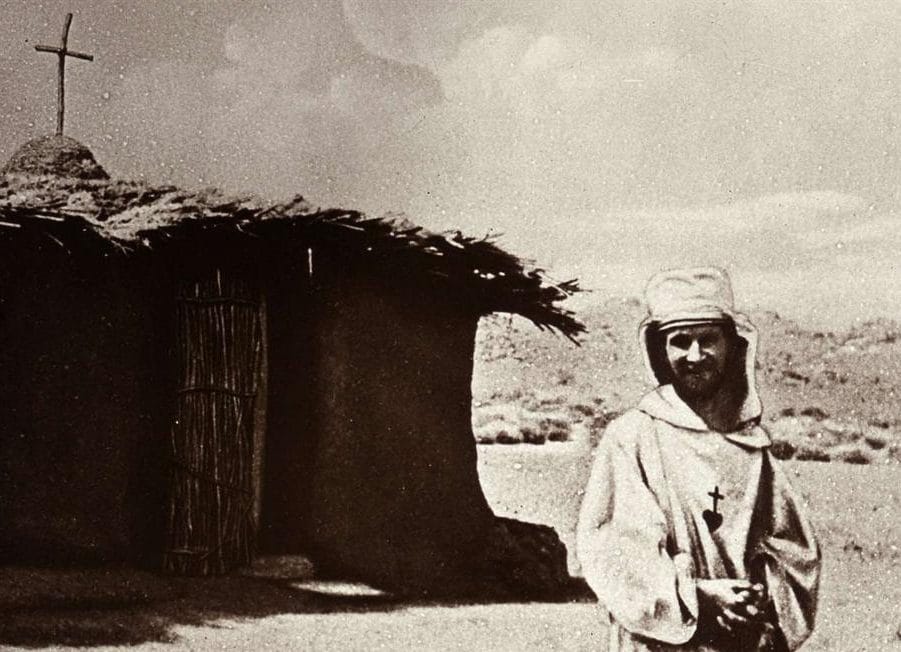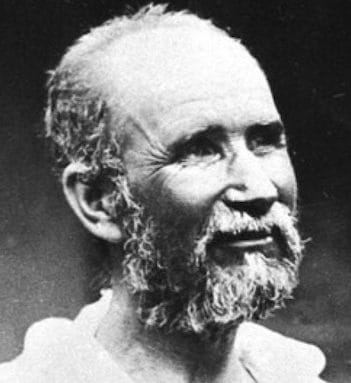Sainthood for Saharan monk

The Catholic Church welcomed a new saint into its midst when Pope Francis canonised Charles de Foucauld at St Peter’s Basilica on Sunday May 15. The canonisation marked the end of an extraordinary journey for the former soldier, Trappist monk, explorer, hermit and priest who wanted to imitate the life of Jesus Christ.
Son of a viscount, Charles was born in Strasburg on September 15, 1858. A dreamer, who put the Eucharist and the gospel at the centre of his existence, he was born into a devout Catholic family. Seven months after his birth, his mother died as a result of a miscarriage and his father passed away six months later from tuberculosis.
From the age of six, Charles and a younger sister were raised by their paternal grandfather. At his grandfather’s request, he attended a military academy and was commissioned into the army in Algeria. As an orphan he showed no sadness; his serene and composed demeanour seemed to match a great exuberance for life.
Charles was a good soldier but was opposed to orders and commands and – notorious for his wild parties – was eventually dismissed from the army. At the time, fighting in north Africa was fierce and Charles, well adapted for war, was recalled by the army. A soldier’s life, however, was not for him and for a while he stopped being a practising Catholic; he wanted to rebel against his upbringing and squandered his grandfather’s substantial inheritance, leading a life of debauchery.
In 1884, he was sent to survey uncharted areas in Morocco, a dangerous mission organised by the Geographical Society in Paris. Considering that no maps of the terrain were available, this was considered a dangerous undertaking. Muslims in Morocco would not hesitate to kill a Frenchman, but he disguised himself as an itinerant Jew.
Charles carried out his duties in such a diligent and professional manner that he was awarded a gold medal for his services. He wrote Recognition in Morocco, a review of the maps and accurate descriptions of the region (published 1888).
But his achievements in Morocco imparted on him something that was considerably more precious. Charles developed an awareness that he’d experienced earlier in his life – an awareness of God. Perhaps it was his observation of the Muslim way of life that had kindled this awareness. As he prayed one evening before a lighted candle and the tabernacle, he declared, “My God, if you exist let me know.”
In 1886, now 28, God let him know. His cousin, Marie de Bondy, who was a devoted Christian, discussed Catholicism with him and gave him books to read. She urged him to talk to her confessor Fr Havelin, an Augustinian priest, known for his holiness and preaching. After making a confession and receiving communion, Charles “became transformed” and “as soon as I knew God existed, I knew I had to give Him everything.”
Such insightful revelation was priceless for Charles, who now joined the Trappists or the Cistercians (a religious order of priests and nuns that follows the rule of Saint Benedict). This insight took him to Notre-Dame des Neiges, Our Lady of the Snows, a monastery, built in 1850 in the remote mountains of south-east France. This austere, cloistered lifestyle of the Trappists suited him, but the community later transferred him to their primitive daughter monastery in Akbès, Syria.
For three years Charles was secure in this frugal life at Akbès. The Trappist custom was austere, but Charles’ goal was the formation of a community that would share a life of God’s most abandoned children, mingling prayer and hospitality and doing menial jobs. At the end of 1896, he left the Trappists in search of that greater humility.
In March 1897, Charles entered Nazareth determined to live a life of prayer and work as Jesus did. He worked as a handyman and as a sacristan for the Sisters of the Poor Clares (an order of nuns founded in 1212 by Saint Clare, who was a follower of St Francis of Assisi). While living amongst the poor, he fasted and performed simple manual tasks. He called this community the ‘Hermits of the Sacred Heart’.
Charles spent many hours in prayer. Although this was a peaceful time for him, he was also overcome by ambitions to work as a nurse, become a spiritual director of the Poor Clares and be ordained a priest. When his superiors did not agree with his plans, he went to Rome where he was ordained in 1901 aged 43.
In French occupied Algeria, a remote part of the Sahara, Charles established a community. Devoted to prayer, silence and hard work, his dream was taking shape. The area was the centre of a war zone and only for his contacts with serving officers in the French government, he would not have been allowed to carry out his planned work. At Béni-Abbès, near the Moroccan border, troops helped him to build a crude chapel.
Charles celebrated Mass and Eucharist for the French soldiers and was a chaplain to the military. Alone in that small chapel, he managed to find someone to assist him at daily Mass and he used a simple monstrance for the Blessed Sacrament. Determined to succeed, Charles designed a long, white habit which had a heart of Jesus on it surmounted by a cross. He called the community the Brothers of the Sacred Heart. He survived on the vegetables he grew, all the time getting closer in his quest to imitate the life of Jesus.
Meanwhile, in Algeria’s mountainous region of Hoggar was the Tuareg, an illiterate and wayward nomadic tribe, noted for its ferocity and ruthless cruelty, which the French had been fighting for years. In 1903 a French officer, Colonel Laperrine, who knew Charles, was instructed to calm this turbulent situation. Laperrine realised that Charles could be a mediator and he sent one of his officers to discuss this situation with him.
At Laperrine’s request, Charles integrated with the Tuareg. He prayed with them and even studied their language and translated the gospels for them. He was introduced to a Tuareg chief called Moussa, who allowed him to stay in a hermitage at Tamanrasset, a desolate and mountainous area, where he had a stone hut at the top of a mountain. When the situation became tense, the army wanted to transfer him to one of their outposts, but he preferred to stay at Tamanrasset.
During the turmoil of World War I, European governments had to withdraw their forces from north Africa. Local tribes were now free to wage savage attacks on their neighbours. Germany and Turkey supplied the Senoussi (a Muslim political sect located in Libya) with arms and weapons. Charles built a fort in Tamanrasset to defend his comrades and the French supplied Moussa with troops.
On December 1, 1916, the Senoussi approached the fort at Tamanrasset intending to kidnap Charles. They tortured him for a day. But despite being treated badly, Charles continued to pray silently.
What happened next is not exactly known. One story states the bandits stressed he would be spared if he renounced his faith and recited the Muslim creed, the Shahada. When he refused, he was shot through the head. Another testimony claims that the bandits were disturbed by guardsmen and a 15-year-old boy, who was guarding him, shot Charles in panic, killing him instantly.
Just a few yards from Charles’ body, the monstrance – containing the Blessed Sacrament – was buried in the sand.
This story by Anthony E Dundon first appeared in The Majellan in 2019 but has been updated to reflect Charles de Foucauld’s recent canonisation.
We encourage you to share and use this material on your own website. However, when using materials from Majellan Media’s website, please include the following in your citation: Sourced from www.majellan.media

